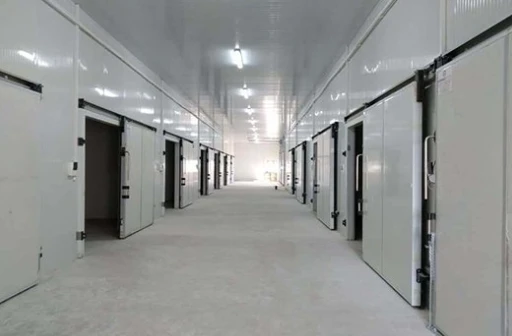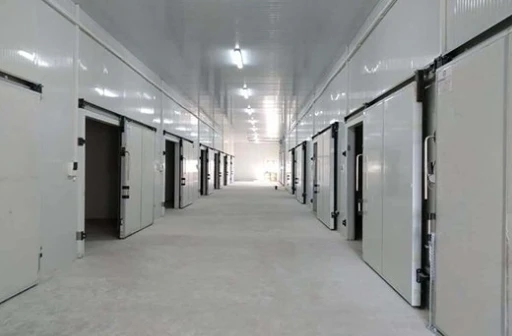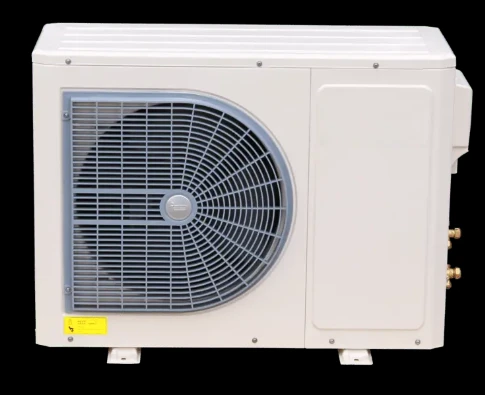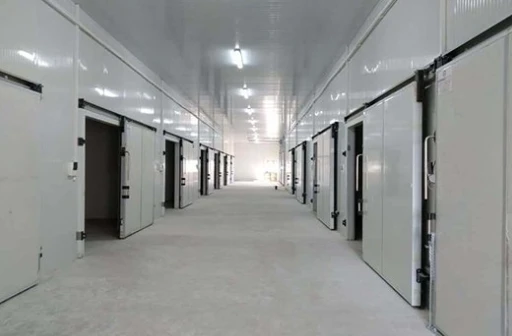Condensers Reject Heat Efficiently
In the intricate world of cooling and refrigeration systems, condensers serve as critical components, responsible for expelling heat and enabling the efficient operation of everything from home air conditioners to industrial refrigeration units. Among the most essential types are the air con condenser, designed for HVAC systems, and the refrigeration condenser, tailored for cold storage and industrial cooling. These devices play a pivotal role in the vapor-compression cycle, converting high-pressure refrigerant vapor into a liquid by releasing heat into the surrounding environment. Understanding their design, functionality, and applications is key for engineers, technicians, and business owners seeking to optimize cooling performance, energy efficiency, and system longevity. This article explores the nuances of these condensers, from their core mechanisms to their unique advantages, providing a comprehensive guide to their roles in modern cooling technology.
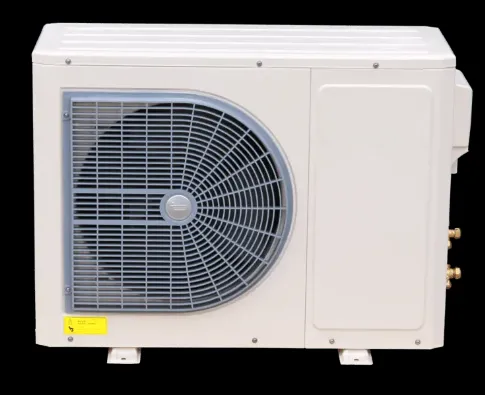
The Role and Function of condensers in Cooling Systems
Condensers are the workhorses of heat rejection in vapor-compression systems, facilitating the critical phase where refrigerant transitions from a high-pressure, high-temperature vapor to a high-pressure liquid. This process is essential for maintaining the cooling cycle, as the released heat allows the refrigerant to continue absorbing warmth in the evaporator, creating the desired cooling effect.
Key Functions in Cooling Systems:
- Heat Rejection: The primary role, ensuring that heat absorbed by the refrigerant in the evaporator is expelled, allowing the cycle to repeat.
- Pressure Regulation: Maintains optimal pressure in the high-pressure side of the system, preventing damage to compressors and other components.
- Refrigerant Preparation: Converts vapor to liquid, ensuring the refrigerant is in the correct state to expand and cool in the evaporator.
The Design and Applications of air con condenser
An air con condenser is a specialized type of condenser designed for air conditioning systems, responsible for releasing heat from the refrigerant to the outdoor environment, enabling indoor cooling. These units are typically located outside residential or commercial buildings, where they can efficiently expel heat without affecting indoor temperatures.
Design Features of air con condensers:
- Finned Coils: Thin metal fins attached to copper or aluminum tubes increase surface area, maximizing heat transfer between the refrigerant and ambient air.
- Axial Fans: High-volume fans draw air through the coils, expelling heated air outward—critical for maintaining efficiency, especially in warm climates.
- Weather-Resistant Casing: Galvanized steel or powder-coated enclosures protect internal components from rain, dust, and UV radiation, ensuring durability in outdoor settings.
- Compressor Integration: In split-system ACs, the condenser often houses the compressor, combining heat rejection and refrigerant compression in one unit.
Applications Across Settings:
- Residential Air Conditioning: Outdoor units for split-system ACs, window units, and heat pumps, where they expel heat during cooling mode and absorb heat during heating mode.
- Commercial HVAC: Rooftop units for offices, malls, and hotels, handling larger cooling loads with multiple fans and enhanced coil designs.
- Automotive Air Conditioning: Located at the front of vehicles, using airflow from driving to cool the refrigerant, with electric fans activating at low speeds or idle.
Efficiency Factors for air con condensers:
- Ambient Temperature: Higher outdoor temperatures reduce efficiency, as the temperature difference between the refrigerant and air decreases. Modern units counter this with variable-speed fans that boost airflow in heat waves.
- Coil Cleanliness: Dust, debris, or plant growth on coils insulates them, reducing heat transfer. Regular cleaning (quarterly for residential units) maintains performance.
- Proper Sizing: Oversized condenserscycle on/off frequently, wasting energy, while undersized units struggle to meet cooling demands—professional sizing based on room size and climate is critical.
The Technical Specifications of refrigeration condenser
A refrigeration condenser is engineered for low-temperature applications, such as industrial freezers, cold storage facilities, and commercial refrigerators, where maintaining sub-zero temperatures requires efficient heat rejection even when the refrigerant is extremely cold. These condensers are designed to handle lower refrigerant temperatures than air con condensers, ensuring reliable performance in demanding environments.
Key Technical Features:
- Low-Temperature Compatibility: Operates with refrigerants designed for freezing, maintaining efficient heat transfer even when refrigerant temperatures are -20°C or lower.
- Heavy-Duty Coils: Thicker tubes and reinforced fins withstand higher pressures and resist corrosion from moisture and refrigerants, common in cold storage.
- High-Capacity Fans or Pumps: Industrial models use multiple fans (air-cooled) or water pumps (water-cooled) to expel heat, even in facilities with large cooling loads.
- Defrost Mechanisms: Some models include electric heaters or hot-gas defrost to prevent ice buildup on coils, which can block airflow in low-temperature environments.
Critical Applications:
- Cold Storage Facilities: Freezers and chillers for storing frozen foods, pharmaceuticals, and chemicals at -18°C to 4°
- Food Processing: Cooling lines for meat, dairy, and bakery products, where rapid heat removal preserves freshness.
- Laboratory Refrigeration: Ultra-low-temperature freezers for biological samples, requiring condensersthat operate efficiently at -80°
Comparing condensers, air con condenser, and refrigeration condenser
Understanding the differences between these condensers ensures the right choice for specific applications. The table below highlights key distinctions:
|
Criteria |
condensers (General) |
air con condenser |
refrigeration condenser |
|
Primary Function |
Heat rejection in all cooling systems |
Heat rejection for air conditioning (cooling/heating) |
Heat rejection for low-temperature refrigeration |
|
Cooling Medium |
Air,water,or evaporative |
Air (residential/commercial); air/water (industrial) |
Air, water, or evaporative (industrial) |
|
Key Design Focus |
Versatility across systems |
High airflow, weather resistance |
Low-temperature efficiency, corrosion resistance |
|
Typical Size |
Compact to industrial-scale |
Small (residential) to large (rooftop) |
Medium to industrial-scale (cold storage) |
FAQS about condensers, air con condenser, and refrigeration condenser
How often should I clean my air con condenser to maintain efficiency?
To keep an air con condenser efficient, clean it at least twice a year—ideally in spring before heavy use and fall after the cooling season. For units in dusty areas (e.g., near construction, dirt roads) or with nearby plants, clean quarterly. Use a garden hose with low pressure (avoid high-pressure washers that damage fins) to rinse coils, removing dust, leaves, and debris. Trim back plants to maintain 2–3 feet of clearance around the unit, ensuring unobstructed airflow.
What is the main difference between a refrigeration condenser and an air con condenser?
The primary difference lies in their operating temperatures and design focus. A refrigeration condenser handles much lower refrigerant temperatures to support freezing or chilling, with reinforced coils and defrost mechanisms to prevent ice buildup. An air con condenser operates at higher refrigerant temperatures for cooling air, prioritizing high airflow and weather resistance for outdoor use. Additionally, refrigeration condensers often use different refrigerants optimized for low temperatures, while air con condensers use refrigerants suited for HVAC.
Can a refrigeration condenser be used in an air conditioning system?
While technically possible, a refrigeration condenser is not ideal for air conditioning. refrigeration condensers are designed for low refrigerant temperatures, so they would operate inefficiently in AC systems, where refrigerant temperatures are higher. This mismatch reduces cooling capacity, increases energy use, and may cause the compressor to overwork, shortening its lifespan. air con condensers, with their focus on high-temperature heat rejection, are better suited for HVAC applications.
How does a water cooled condenser compare to an air-cooled condenser in terms of efficiency?
Water cooled condensers are generally more efficient than air-cooled models because water transfers heat more effectively than air, allowing for lower refrigerant condensing temperatures. This efficiency makes them ideal for large-scale systems (e.g., industrial chillers, data centers) where high cooling loads demand minimal energy waste. However, they require a constant water supply, cooling towers, and water treatment to prevent scale or corrosion—adding complexity and cost. Air-cooled condensers, while slightly less efficient, are simpler to install, maintain, and operate, making them preferable for small to medium systems with limited water access.
What are the signs that a refrigeration condenser is failing?
Signs of a failing refrigeration condenser include:
- Rising Temperatures in Cold Storage: The condenser struggles to expel heat, causing freezer/cooler temperatures to creep above set levels.
- Unusual Noises: Grinding, rattling, or buzzing from fans or motors, indicating worn bearings or loose components.
- Frost Buildup on Coils: Excessive ice on air-cooled coils blocks airflow, reducing efficiency—a sign of defrost system failure or refrigerant leaks.
- High Energy Bills: The compressor works harder to compensate for poor heat rejection, increasing electricity use.
Addressing these issues promptly (e.g., repairing leaks, replacing fans) prevents complete system failure and costly downtime.
At [Shijiazhuang Xuexiang Refrigeration Euquipment Co.,Ltd], we specialize in high-performance condensers tailored to your needs. Whether you require a durable air con condenser for residential HVAC, a heavy-duty refrigeration condenser for cold storage, or a versatile water-cooled condenser for industrial systems, our products combine cutting-edge design with rugged reliability. Our team of experts provides personalized guidance, from sizing and selection to installation and maintenance, ensuring your cooling system operates at peak efficiency for years.Contact us today and take the first step toward a more efficient, reliable cooling solution.













































































































